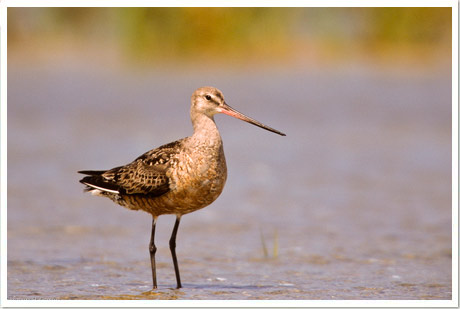|
| Hudsonian Godwit |
PHOTO: 1 2 |
 |
|

|
 |
| As it name implies, the Hudsonian Godwit is from Hudson and James Bays, where it nests on Arctic marshes. The Hudsonian Godwit is a long haul migrant that flies nearly nonstop from Canada to Tierra del Fuego at the tip of South America. Small numbers of Hudsonian Godwits occasionally stop on New England beaches. They may be seen at the tidal flat waterline on Plymouth Beach between July and September. This Godwit’s plumage includes black, white and grays, unlike its larger cousin the Marbled Godwit that displays buff and cinnamon colored plumage. |
|
|